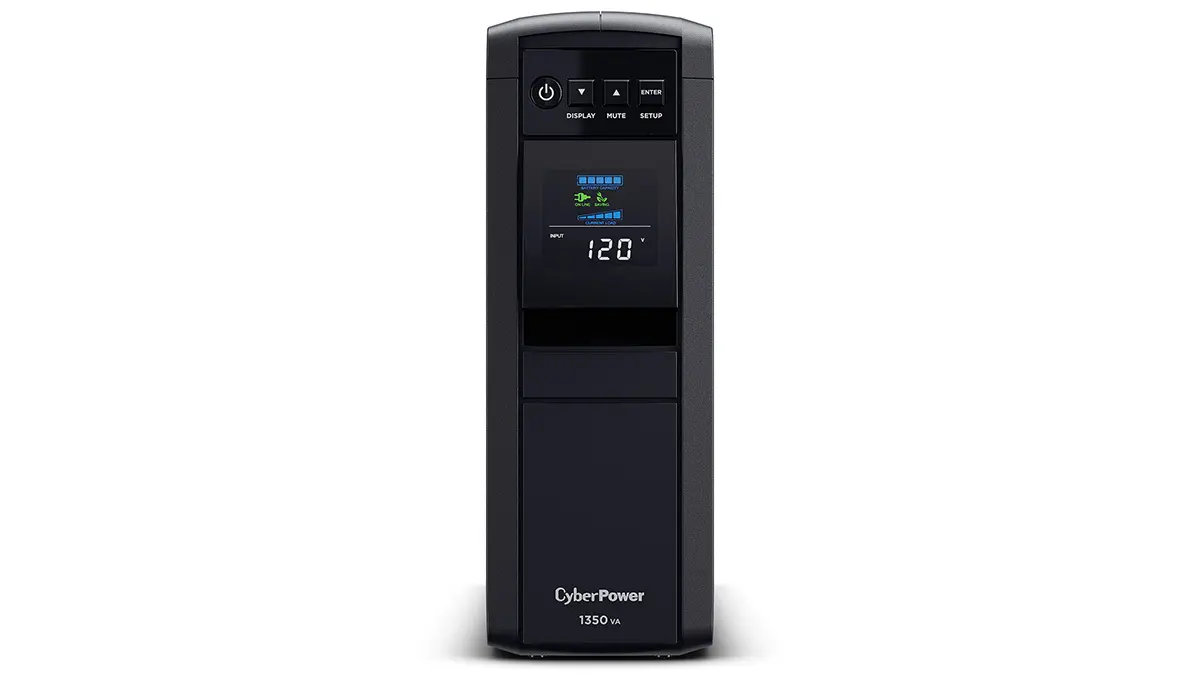
Hands-on review: CyberPower 1360VA PFC Sinewave UPS
The CyberPower 1360VA PFC Sinewave UPS (CP1350EPFCLCD) is an uninterruptible power supply aimed at the small office/home office market. It also features surge protection for power and Ethernet connections.
Protecting your computer and electrical equipment has never been more important, especially if you are working from a home office. For laptop users a power failure is inconvenient, for a desktop PC, though, you could lose the day's work. A power surge could render all your equipment useless.
Game consoles, as well, do not like suddenly losing power. A UPS instantaneously switches from the mains power to the internal battery if a loss of power or a power surge is detected. All the devices connected to the UPS will continue to run until the battery is drained.
But a UPS is not exactly a battery backup, but more of an insurance policy in case of a power cut or a power surge. In the event of mains power failure, a UPS will give you enough time to finish what you are doing and properly shut down your devices. If suitably connected, the UPS will automatically shut down your unattended PC.
The CyberPower 1360VA PFC Sinewave UPS is a consumer-oriented device that stands upright and can easily be tucked away under your desk out of the way. For such a small unit, it's quite weighty. As I pulled it out of its box, the unit rattled. It does feature an exchangeable battery, so figuring that was the probable cause, I opened the thing up to take a look. It was easy to open and sure enough, there is a battery that does shift about ever so slightly in the case.
Setting up is easy, as it's ready for use straight out of the box. All you need to do is plug it in and turn it on.
The back of the unit has six power sockets that offer battery backup and surge protection to your plugged-in devices. There's also an Ethernet in and out (RJ45) to protect your networked devices from a surge. The rear USB and serial ports provide connectivity for monitoring. On the front, there's a USB Type-A and a USB Type-C port for device charging.
The adjustable LCD panel displays the battery capacity, input and output values, current load and estimated battery depletion time. There are three buttons to cycle the display and input settings.
There are ten functions: utility quality, high transfer voltage, low transfer voltage, sensitivity, low battery warning, self-test, LCD test, event reset, return to default setting and return to the status display. These set the sensitivity of the unit, such as what voltages are considered under or over voltage, and the voltage quality tolerance. You'll likely not need to adjust any of these, but if you do you will need to keep the user manual handy for reference.
My PC, putting the UPS under a 158W load during regular office use, would give me about 40 minutes of battery runtime. This drops significantly when playing a game, giving me only a few minutes of battery.
Even under load, the UPS runs silently- if there is a fan inside, I couldn't hear it. An alarm can be set to trigger if the unit starts drawing too much power, which I managed to set off when I had both my PC and a 3D printer connected.
The unit uses the CyberPower PowerPanel desktop software for status monitoring and configuration. This is free to download from the CyberPower website. All the settings available via the display menu can be adjusted with the desktop software.
The PowerPanel Cloud Solution mobile app allows remote monitoring of the UPS, including alerts. There's a 90-day trial (which doesn't require payment details), after which you'll need to subscribe to a plan, which starts at AU$17.99/mo.
The CyberPower 1360VA UPS is a tidy-looking unit that fits well in a small office environment. It's easy to use and provides peace of mind without taking up much space. At around AU$450, the UPS is worth considering to protect your data and equipment in the event of a power cut or power surge.


